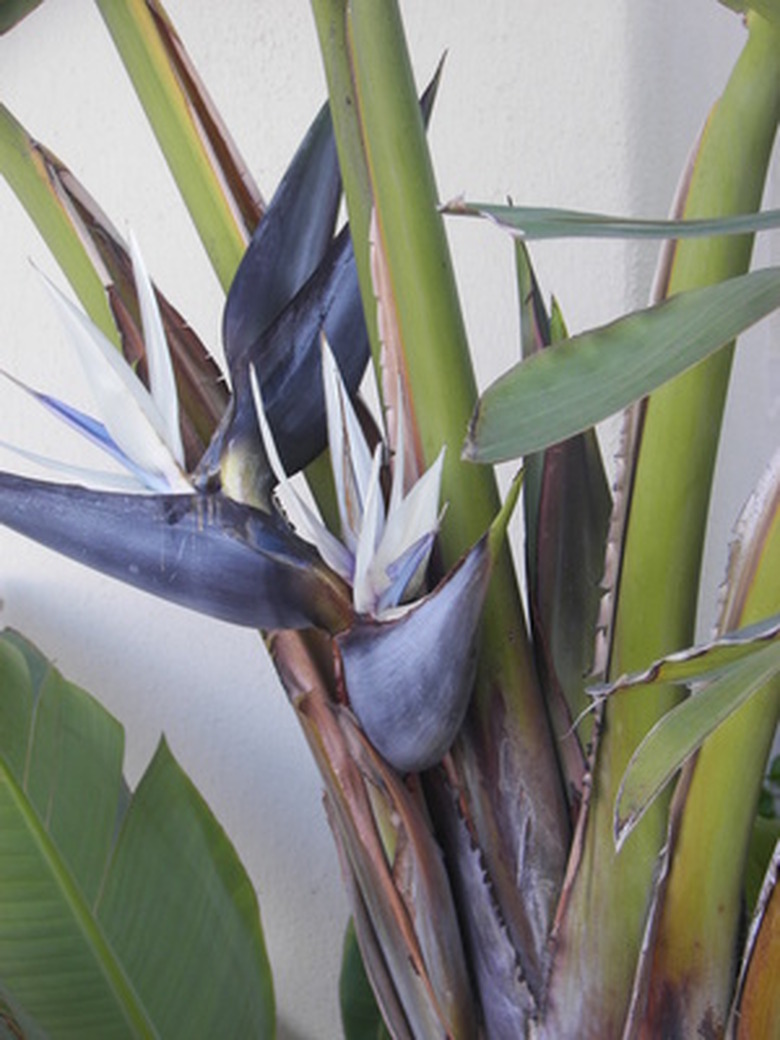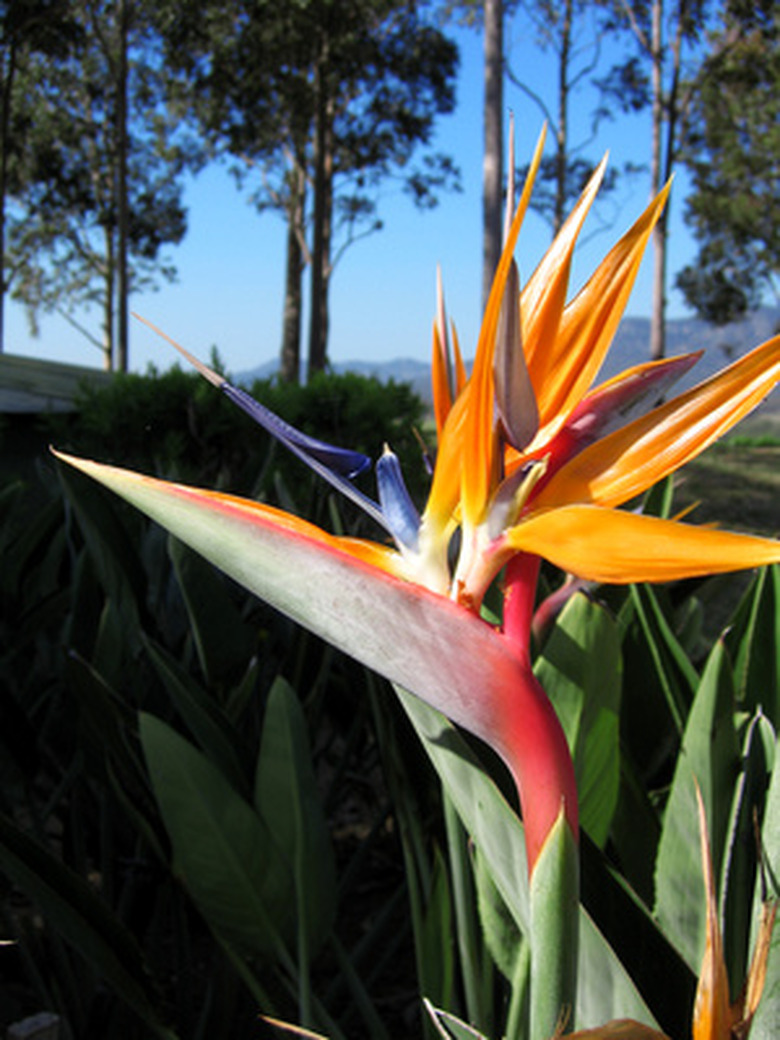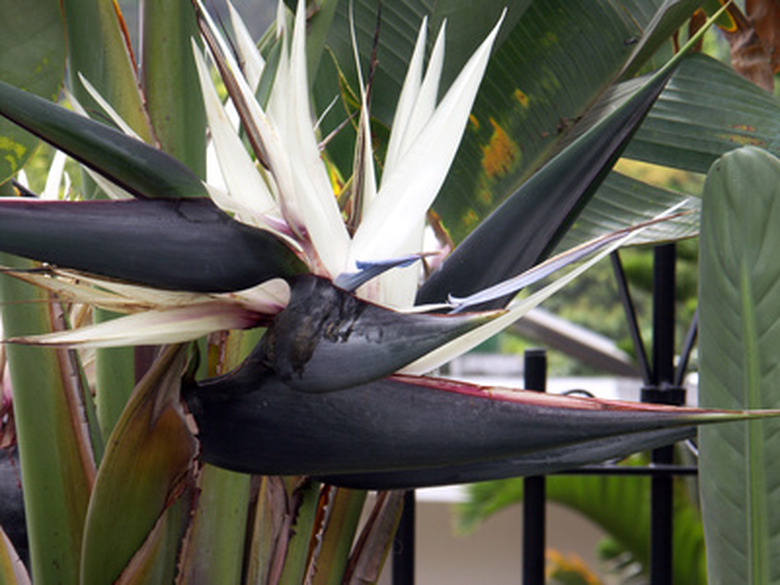Types Of Bird Of Paradise Plants
Five species of subtropical, clump-forming perennials are known as bird of paradise plants (Strelitzia spp.). They are all native to the sunny glades or riverbanks of South Africa and bear strangely shaped flowers comprised of a boat-like spathe and spiky, bird-like petals and sepals, usually in contrasting, vibrant colors. These blooms make excellent, long-lasting cut flowers. Grow all bird of paradise plants in warm climates of the U.S. Department of Agriculture Hardiness Zones 9 and warmer.
Strelitzia Reginae
The world-renown bird of paradise, or crane flower, grows in time to 5 to 6 feet tall and wide, forming an arching clump of waxy gray-blue to gray-green leaves and stems. It blooms most heavily from winter to spring, bearing blossoms of red, yellow, orange and purple. Variety Glauca has the powdery grayer foliage and stems while Humilis, which is also called Pygmaea, only grows to about 3 feet in size. Ovata bears more rounded leaf blades.
- Five species of subtropical, clump-forming perennials are known as bird of paradise plants (Strelitzia spp.).
- The world-renown bird of paradise, or crane flower, grows in time to 5 to 6 feet tall and wide, forming an arching clump of waxy gray-blue to gray-green leaves and stems.
Strelitzia Juncea
Easily distinguished from the common bird of paradise, this species lacks leaf blades, so all stems and leaves look like reeds, hence the name leafless bird of paradise. Considerably slower growing than others, it eventually matures to 5 feet tall and 3 feet wide and produces orange and blue flowers in winter and early spring.
Strelitzia Nicholai
With leaves that look like banana foliage, this giant species gains the name giant or tree bird of paradise. Reaching heights of 20 to 30 feet and a clump width to 15 feet, it also is called white bird of paradise because is large flowers in spring and early summer are predominantly white with dark blue-purple accents.
Strelitzia Alba
Virtually identical to Strelitzia nicholai to the casual observer, this species also can mature to nearly 30 feet tall and about 10 to 12 feet wide. Also called the white bird of paradise, its large flowers are white with a small baby-blue-to-sky-blue petal crest, different from those of the tree bird of paradise. It blooms in spring primarily.
- Easily distinguished from the common bird of paradise, this species lacks leaf blades, so all stems and leaves look like reeds, hence the name leafless bird of paradise.
- Virtually identical to Strelitzia nicholai to the casual observer, this species also can mature to nearly 30 feet tall and about 10 to 12 feet wide.
Strelitzia Caudata
This species from higher elevations is called the mountain bird of paradise, African desert banana or the Transvaal wild banana. It grows to 25 feet tall and 10 feet wide and its large leaves have a thin tail-like tip. It blooms white-and-blue petalled flowers. Plant collectors consider this the most difficult plant to obtain seeds or live plants.
Other
Not genetically related to Strelitzia or remotely resembling them, some small flowering trees and shrubs are sometimes called bird of paradise plants. The long, colorful flower stamens lend both the shrub Caesalpinia gillesii and small tree Caesalpinia pulcherrima this exotic moniker. The latter species is more often called the pride of Barbados or dwarf poinciana.
- This species from higher elevations is called the mountain bird of paradise, African desert banana or the Transvaal wild banana.
- Not genetically related to Strelitzia or remotely resembling them, some small flowering trees and shrubs are sometimes called bird of paradise plants.
References
- "Tropical Flowering Plants"; Kirsten Albrecht Llamas; 2003
- PlantzAfrica: Strelitzia Juncea
- Floridata: Strelitzia Nicholai
- "A-Z Encyclopedia of Garden Plants"; Christopher Brickell and H. Marc Cathey, eds.; 2004


